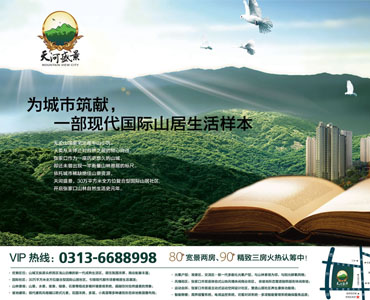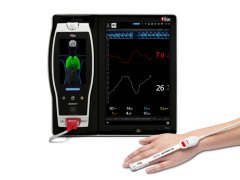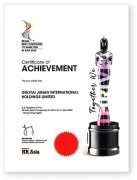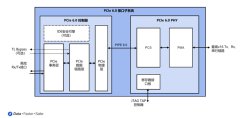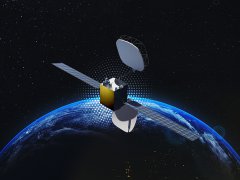Children Ages 2 to <12 Experienced 94.8% Fewer Hereditary Angioedema (HAE) Attacks During Treatment with TAKHZYRO Over the 52-Week Treatment Period Compared to Baseline
Late-Breaking Flash Talk Presentation of Phase 3 Data Highlights Positive, Clinically Meaningful Results in Children <6 Years, Where No Long-Term Prophylaxis Treatment (LTP) is Currently Approved
Results are Consistent with the Favorable Efficacy and Safety Profile of TAKHZYRO Observed in Adult and Adolescent Patients in Earlier Studies
Global Regulatory Filings to Begin in Fiscal Year 2022
OSAKA, Japan & CAMBRIDGE, Mass. -- (BUSINESS WIRE) --
Takeda (TSE:4502/NYSE:TAK) today announced late-breaking data from the Phase 3 SPRING study (NCT04070326) presented at the European Academy of Allergy and Clinical Immunology (EAACI) Hybrid Congress 2022, demonstrating positive results of TAKHZYRO® (lanadelumab) for preventing hereditary angioedema (HAE) attacks in patients 2 to <12 years of age, which were consistent with earlier studies in adult and adolescent patients.1 There are currently no long-term prophylactic (LTP) treatments approved for HAE patients younger than 6 years.2, 3, 4, 5
The primary objective of the open-label, multicenter, Phase 3 SPRING study was to evaluate the safety and pharmacokinetics (PK) of TAKHZYRO in patients aged 2 to <12 years with HAE. Clinical outcomes (prevention of HAE attacks) were measured as a secondary objective.
“HAE is a rare condition where unpredictable symptoms like severely debilitating swelling can take a toll on children both physically and emotionally,” said Dr. Marcus Maurer, Professor of Dermatology and Allergy Charité – Universitätsmedizin Berlin, Germany and principal investigator of the SPRING study. “In the SPRING study, we saw a majority of children who had been suffering nearly two HAE attacks per month on average at baseline, who were then attack-free throughout the 52-week trial of treatment with TAKHZYRO.”
In this study, HAE patients received a dose of 150 milligrams (mg) every 4 weeks in patients 2 to <6 years and every 2 weeks in patients aged 6 to <12 years.1 TAKHZYRO reduced the rate of HAE attacks in children by a mean of 94.8% compared to baseline, from 1.84 attacks per month to 0.08 attacks during treatment.1 The majority of patients (76.2%) were attack-free during the 52-week treatment period with an average of 99.5% attack-free days.1 No deaths or serious treatment-emergent adverse events (TEAEs) were reported during the study, and no patients withdrew from the study due to TEAEs.1 The most commonly reported TEAE was injection site pain, and most TEAEs were mild or moderate in severity.6 These results are consistent with the favorable efficacy and safety profile of TAKHYZRO observed in earlier studies with adult and adolescent patients.1,7,8
HAE attacks, which can involve serious and severely debilitating swelling in the abdomen, face, feet, genitals, hands and throat, may occur very early in childhood. Potentially fatal upper airway angioedema has been reported in patients as young as 3 years old.9,10 HAE diagnosis can take an average of 8.4 years after symptom onset.8 Among adults living with HAE, 50% of patients experience anxiety, 34% experience difficulty with social activity and 58% report symptoms negatively affect career advancements.11
“The SPRING study data reinforce the safety and efficacy of TAKHZYRO across a broad range of patients living with HAE,” said Ming Yu, Global Clinical Lead, Takeda. “We are encouraged by these findings as they demonstrate the potential of long-term prophylaxis treatments to reduce recurrent HAE attacks in children as young as two who currently have no approved long-term preventative treatment option.”
Results From the Open-label, Multicenter Phase 3 SPRING study include:1
-
Overall, the attack rate during lanadelumab treatment was reduced by ~95% versus baseline.
- The extent of reduction was similar between patients who received 150 mg lanadelumab q4w or q2w.
- Systemic exposure to lanadelumab was demonstrated.
- Compared with adults and older adolescents who received 300 mg q2w:
- Steady-state exposure with 150 mg q2w in patients aged 6 to <12 years was similar.
- Minimum steady-state concentrations with 150 mg q4w were 50–60% lower in patients aged 2 to <6 years but were sufficient to produce a clinically meaningful treatment response.
- 16 (76.2%) patients were attack-free during the full treatment period.
- A mean (range) of 99.5% (96.4–100) of days were attack-free.
- 7 (33.3%) patients reported any TEAE related to treatment; all were related to the injection site.
- The profile of related TEAEs was similar between the two treatment groups.
- There were no deaths, serious TEAEs, hospitalisations or discontinuations due to TEAEs.
- Overall, 17 (81.0%) patients reported any TEAEs.
- There were no adverse events of special interest (hypersensitivity reactions, hypercoagulability and bleeding events).
- No clinically meaningful safety findings were identified with respect to clinical laboratory tests or vital signs.
These data will be submitted to global regulatory authorities to evaluate a potential label expansion for TAKHZYRO to include the younger patient population.
Takeda will have a total of 11 presentations at EAACI:
- Efficacy and Safety of Lanadelumab in Pediatric Patients Aged 2 to <12 years With Hereditary Angioedema: Results From the Open-Label, Multicenter Phase 3 SPRING Study
- Real-world effectiveness and safety of lanadelumab in patients with hereditary angioedema: interim findings from the ENABLE Study
- Lanadelumab treatment patterns among patients with HAE-C1-INH: Interim analysis of the ENABLE study
- Patient-reported outcomes (PROs) in patients with hereditary angioedema receiving lanadelumab: Interim findings from the ENABLE Study
- Lanadelumab safety and efficacy in hereditary angioedema after switching from prior long-term prophylaxis: Analysis from the HELP OLE study
- Attack Rate Reduction After Switching to Lanadelumab Therapy in Patients with Hereditary Angioedema (HAE): Interim Findings from EMPOWER
- Attack-Free Status by prior LTP use in the HELP OLE: Long-term lanadelumab prophylactic treatment for 12 months or longer
- Real-world effectiveness and disease management data in European patients with HAE on long-term prophylaxis with lanadelumab: an interim analysis
- An international physician real-world practice patterns survey evaluating the burden of illness in hereditary angioedema Type I/II
- Frequency of HAE attacks, clinical outcomes, and quality of life for patients prescribed lanadelumab and other prophylaxis: analysis of real-world patient data
- Plasma proteomic analyses from patients with hereditary angioedema due to C1 inhibitor deficiency before and following lanadelumab treatment
- Maurer M, Lumry WR, Li H, et al. Efficacy and Safety of Lanadelumab in Pediatric Patients Aged 2 to <12 years With Hereditary Angioedema: Results From the Open-Label, Multicenter Phase 3
- HAEGARDA® (C1 Esterase Inhibitor Subcutaneous [Human]). Product Characteristics.
- CINRYZE® (C1 esterase inhibitor [human]). Product Characteristics.
- CINRYZE® (C1 esterase inhibitor [human]). Prescribing Information.
- Farkas H, Martinez-Saguer I, Bork K, Bowen T, Craig T, Frank M, Germenis AE, Grumach AS, Luczay A, Varga L, Zanichelli A, on behalf of HAWK.
- Maurer M, Lumry WR, Li H, et al. Efficacy and Safety of Lanadelumab in Pediatric Patients Aged 2 to <12 years With Hereditary Angioedema: Results From the Open-Label, Multicenter Phase 3 SPRING Study. Abstract submitted to European Academy of Allergy and Clinical Immunology Hybrid Congress 2022.
- TAKHZYRO® (lanadelumab-flyo) injection. U.S. Prescribing Information.
- TAKHZYRO® (lanadelumab). European Summary of Product Characteristics
- Banerji A, Busse P, Christiansen SC, et al. Current state of hereditary angioedema management: a patient survey. Allergy Asthma Proc. 2015;36(3):213-217.
- Bork K, Hardt J, Schicketanz KH, Ressel N. Clinical studies of sudden upper airway obstruction in patients with hereditary angioedema due to C1 esterase inhibitor deficiency. Arch Intern Med. 2003;163(10):1229–35. doi: 10.1001/archinte.163.10.1229.
- Maurer M, Magerl M, Betschel S, et al. The international WAO/EAACI guideline for the management of hereditary angioedema – The 2021 revision and update. Allergy. 2022; 00: 1– 30. doi:10.1111/all.15214.
- Banerji A, Davis KH, Brown TM, et al. Patient-reported burden of hereditary angioedema: findings from a patient survey in the United States. Ann Allergy Asthma Immunol. 2020;124(6)600-607.
- Longhurst HJ, Bork K. Hereditary angioedema: an update on causes, manifestations, and treatment. Br J Hosp Med. 2019;80(7):391-398.
For additional details on the data presented across Takeda’s portfolio of HAE medicines at EAACI, visit the congress website.
About SPRING Study
SHP643-301, also known as the SPRING study, is a multicenter, open-label Phase 3 study to evaluate the safety and pharmacokinetics (PK) of TAKHZYRO in patients aged 2 to <12 years with HAE.1 Participants aged 2 to <6 years received lanadelumab at a dose of 150 milligrams (mg) every 4 weeks (q4wks) over a 52-week treatment period. Participants aged 6 to <12 years received lanadelumab at a dose of 150 mg every 2 weeks (q2wks) over a 52-week treatment period and had the option to reduce the dose frequency to q4wks if they were well controlled (e.g., attack-free) for 26 weeks.1 HAE attack rates were analysed using descriptive statistics.1
About TAKHZYRO® (lanadelumab-flyo) Injection
TAKHZYRO is a fully human monoclonal antibody that specifically binds and decreases plasma kallikrein and is indicated for routine prevention of recurrent attacks of HAE in patients aged 12 years and older. It was studied in one of the largest prevention studies in HAE with the longest active treatment duration, and TAKHZYRO consistently demonstrated HAE attack reduction. TAKHZYRO is formulated for subcutaneous administration and has a half-life of approximately two weeks.8 TAKHZYRO is intended for self-administration or administration by a caregiver once trained by a healthcare professional.
TAKHZYRO Safety Information for Europe
Please consult the TAKHZYRO Summary Product Characteristics (SmPC) before prescribing.
TAKHZYRO treatment should be initiated under the supervision of a physician experienced in the management of patients with hereditary angioedema (HAE). TAKHZYRO may be self-administered or administered by a caregiver only after training on SC injection technique by a healthcare professional.
Contraindication
Hypersensitivity to the active substance or to any of the excipients.8
Warnings and Precautions
Traceability: In order to improve the traceability of biological medicinal products, the name and the batch number of the administered product should be clearly recorded.8
Hypersensitivity reactions have been observed. In case of a severe hypersensitivity reaction, administration of TAKHZYRO must be stopped immediately and appropriate treatment must be initiated.8
General: TAKHZYRO is not intended for treatment of acute HAE attacks. In case of a breakthrough HAE attack, individualized treatment should be initiated with an approved rescue medication. There are no available clinical data on the use of lanadelumab in HAE patients with normal C1-INH activity.5
Interference with coagulation test: Lanadelumab can increase activated partial thromboplastin time (aPTT) due to an interaction of lanadelumab with the aPTT assay. The reagents used in the aPTT laboratory test initiate intrinsic coagulation through the activation of plasma kallikrein in the contact system. Inhibition of plasma kallikrein by lanadelumab can increase aPTT in this assay. None of the increases in aPTT in patients treated with TAKHZYRO were associated with abnormal bleeding adverse events. There were no differences in international normalised ratio (INR) between treatment groups.8
Sodium content: This medicinal product contains less than 1 mmol sodium (23 mg) per vial, that is to say essentially 'sodium-free'.8
Interactions
No dedicated drug-drug interaction studies have been conducted. Based on the characteristics of lanadelumab, no pharmacokinetic interactions with co-administered medicinal products is expected.
As expected, concomitant use of the rescue medication C1 esterase inhibitor results in an additive effect on lanadelumab-cHMWK response based on the mechanism of action (MOA) of lanadelumab and C1 esterase inhibitor.8
Immunogenicity
Treatment with lanadelumab has been associated with development of treatment emergent anti-drug antibodies (ADA) in 11.9% (10/84) of subjects. All antibody titres were low. The ADA response was transient in 20% (2/10) of ADA positive subjects. 2.4% (2/84) of lanadelumab-treated subjects tested positive for neutralizing antibodies.8
The development of ADA including neutralising antibodies against TAKHZYRO did not appear to adversely affect the pharmacokinetic (PK) and pharmacodynamics (PD) profiles or clinical response.5
Immunogenicity
The most commonly observed adverse reaction (52.4%) associated with TAKHZYRO was injection site reactions (ISR) including injection site pain, injection site erythema and injection site bruising. Of these ISRs, 97% were of mild intensity, 90% resolved within 1 day after onset with a median duration of 6 minutes.8
Hypersensitivity reaction (mild and moderate pruritus, discomfort and tingling of tongue) was observed (1.2%)8
|
Very common |
Injection site reactions* |
|
|
Common |
Hypersensitivity**, dizziness, rash maculo-papular, myalgia, alanine aminotransferase increased, aspartate aminotransferase increased. |
*Injection site reactions include: pain, erythema, bruising, discomfort, haematoma, haemorrhage, pruritus, swelling, induration, paraesthesia, reaction, warmth, oedema and rash.8
** Hypersensitivity includes: pruritus, discomfort and tingling of tongue.8
For European Union Summary of Product Characteristics, please visit https://www.ema.europa.eu/en/documents/product-information/takhzyro-epar-product-information_en.pdf.
For full U.S. Prescribing Information, including the approved indication and important safety information, please visit https://www.shirecontent.com/PI/PDFs/TAKHZYRO_USA_ENG.pdf.
About Hereditary Angioedema
Hereditary angioedema (HAE) is a rare genetic disorder that results in recurring attacks of oedema – swelling – in various parts of the body, including the abdomen, face, feet, genitals, hands and throat. The swelling can be debilitating and painful.11 Attacks that obstruct the airways can cause asphyxiation and are potentially life threatening.12 HAE affects an estimated 1 in 50,000 people worldwide.13 It is often under recognized, under diagnosed and under treated.13
Takeda in Hereditary Angioedema
Hereditary Angioedema (HAE), like so many other rare diseases, is highly complex, and patients, their families and caregivers often undergo years of strain trying to understand their disease, get a definitive diagnosis and gain access to the medicines they need. At Takeda we are a committed champion for the patients we serve. Every individual living with HAE is unique and by listening and reacting to their needs, we translate the insights we gain into innovative solutions – from diagnosis to ongoing management. Advancing the science is crucial to the way we operate and we are bold in our mission to accelerate diagnosis and develop treatments that will make a difference to the lives of HAE patients, their support networks and those medical professionals who care for them.
About Takeda
Takeda is a global, values-based, R&D-driven biopharmaceutical leader headquartered in Japan, committed to discover and deliver life-transforming treatments, guided by our commitment to patients, our people and the planet. Takeda focuses its R&D efforts on four therapeutic areas: Oncology, Rare Genetics and Hematology, Neuroscience, and Gastroenterology (GI). We also make targeted R&D investments in Plasma-Derived Therapies and Vaccines. We are focusing on developing highly innovative medicines that contribute to making a difference in people’s lives by advancing the frontier of new treatment options and leveraging our enhanced collaborative R&D engine and capabilities to create a robust, modality-diverse pipeline. Our employees are committed to improving quality of life for patients and to working with our partners in health care in approximately 80 countries and regions. For more information, visit https://www.takeda.com.
Important Notice
For the purposes of this notice, “press release” means this document, any oral presentation, any question and answer session and any written or oral material discussed or distributed by Takeda Pharmaceutical Company Limited (“Takeda”) regarding this release. This press release (including any oral briefing and any question-and-answer in connection with it) is not intended to, and does not constitute, represent or form part of any offer, invitation or solicitation of any offer to purchase, otherwise acquire, subscribe for, exchange, sell or otherwise dispose of, any securities or the solicitation of any vote or approval in any jurisdiction. No shares or other securities are being offered to the public by means of this press release. No offering of securities shall be made in the United States except pursuant to registration under the U.S. Securities Act of 1933, as amended, or an exemption therefrom. This press release is being given (together with any further information which may be provided to the recipient) on the condition that it is for use by the recipient for information purposes only (and not for the evaluation of any investment, acquisition, disposal or any other transaction). Any failure to comply with these restrictions may constitute a violation of applicable securities laws.
The companies in which Takeda directly and indirectly owns investments are separate entities. In this press release, “Takeda” is sometimes used for convenience where references are made to Takeda and its subsidiaries in general. Likewise, the words “we”, “us” and “our” are also used to refer to subsidiaries in general or to those who work for them. These expressions are also used where no useful purpose is served by identifying the particular company or companies.
Forward-Looking Statements
This press release and any materials distributed in connection with this press release may contain forward-looking statements, beliefs or opinions regarding Takeda’s future business, future position and results of operations, including estimates, forecasts, targets and plans for Takeda. Without limitation, forward-looking statements often include words such as “targets”, “plans”, “believes”, “hopes”, “continues”, “expects”, “aims”, “intends”, “ensures”, “will”, “may”, “should”, “would”, “could” “anticipates”, “estimates”, “projects” or similar expressions or the negative thereof. These forward-looking statements are based on assumptions about many important factors, including the following, which could cause actual results to differ materially from those expressed or implied by the forward-looking statements: the economic circumstances surrounding Takeda’s global business, including general economic conditions in Japan and the United States; competitive pressures and developments; changes to applicable laws and regulations, including global health care reforms; challenges inherent in new product development, including uncertainty of clinical success and decisions of regulatory authorities and the timing thereof; uncertainty of commercial success for new and existing products; manufacturing difficulties or delays; fluctuations in interest and currency exchange rates; claims or concerns regarding the safety or efficacy of marketed products or product candidates; the impact of health crises, like the novel coronavirus pandemic, on Takeda and its customers and suppliers, including foreign governments in countries in which Takeda operates, or on other facets of its business; the timing and impact of post-merger integration efforts with acquired companies; the ability to divest assets that are not core to Takeda’s operations and the timing of any such divestment(s); and other factors identified in Takeda’s most recent Annual Report on Form 20-F and Takeda’s other reports filed with the U.S. Securities and Exchange Commission, available on Takeda’s website at: https://www.takeda.com/investors/sec-filings/ or at www.sec.gov. Takeda does not undertake to update any of the forward-looking statements contained in this press release or any other forward-looking statements it may make, except as required by law or stock exchange rule. Past performance is not an indicator of future results and the results or statements of Takeda in this press release may not be indicative of, and are not an estimate, forecast, guarantee or projection of Takeda’s future results.
Medical information
This press release contains information about products that may not be available in all countries, or may be available under different trademarks, for different indications, in different dosages, or in different strengths. Nothing contained herein should be considered a solicitation, promotion or advertisement for any prescription drugs including the ones under development.
References
View source version on businesswire.com: https://www.businesswire.com/news/home/20220630005021/en/
CONTACT:
Media:
Japanese Media
Jun Saito
jun.saito@takeda.com
+81 (0) 3-3278-3414
U.S. and International Media
Erin-Marie Beals
erin-marie.beals@takeda.com
+ 1 781 336 9417


